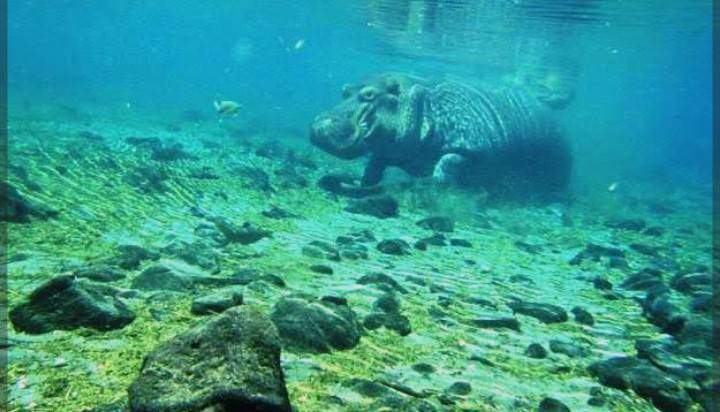

In the dying light of day, when the
sun sinks into the vast horizons of Tsavo West National Park, a surreal scene
unfolds.
Silhouettes of wild game rush to
watering holes, the skies glow with amber and gold, and nature pauses in
reverence.
For those who have stood on this
sunbaked soil, it is more than just a sunset. It as a moment of magic that
stays with you.
Located in Taita Taveta and Makueni
Counties along the Nairobi-Mombasa highway, Tsavo West is the country’s
second-largest protected area, managed by the Kenya Wildlife Service (KWS).
Covering vast expanses of savannah,
rugged hills, volcanic formations and riverine oases, the park is a natural canvas,
where history, wildlife and landscape converge in an awe-inspiring spectacle.
A
land of natural wonders
Perhaps one of the most dramatic
sights in Tsavo West is Mzima Springs, where crystal-clear waters gush
from beneath ancient lava rocks, forming pools that sustain hippos, crocodiles
and birds.
The springs produce millions of
gallons of water each day and remain a lifeline for wildlife, especially during
the long dry seasons.
The park also holds immense historical
value, parts of the First World War were fought in this rugged terrain,
when it was barely explored, making it not just a wildlife haven but a
landscape rich in memory and legacy.
The Shetani Lava Flow, a
jagged black trail of solidified magma, is another geological marvel.
Formed around 200 years ago, its
name, Shetani, meaning "devil" in Swahili, originates from local lore
that the eruption was the work of evil spirits.
Today, it is a dramatic and hauntingly beautiful monument to the Earth's raw power.

The
last refuge of the Black Rhino
In a region once ravaged by poaching, Ngulia Rhino Sanctuary stands as a testament to country’s conservation efforts.
Tucked within the park, the
sanctuary is home to a steadily growing population of highly endangered
black rhinos, one of Africa’s most threatened species.
Visitors to Tsavo West have a rare
opportunity to glimpse these elusive animals in their natural habitat, a
privilege that KWS continues to protect with armed patrols, aerial
surveillance, and tight security protocols.
Wildlife
and wilderness in harmony
From the stealthy leopard to the
towering elephant, Tsavo West is home to a staggering variety of wildlife.
KWS records show the presence of
buffalo, cheetah, giraffe, zebra, waterbuck, hartebeest, oryx, dik-dik, lesser
kudu, and even nocturnal species like porcupines.
The park's mixed habitats, from
dense acacia woodland to open grasslands, support thousands of plant species,
making it a hotspot for biodiversity.
For bird lovers, Lake Jipe,
straddling the Kenya-Tanzania border, offers a sanctuary for aquatic and
migratory birds.
The lake is also rich in fish,
providing a livelihood for local communities and a natural feeding ground for
wetland birds.
A
place to walk, reflect and reconnect
Unlike the fast-paced game drives of
many other parks, Tsavo West invites visitors to slow down.
It is one of the few parks in the
country where walking safaris are permitted in designated areas, such as
Chaimu Hill , a black cinder cone perfect for light hiking and panoramic
views.
Poacher's Lookout and Roaring Rocks offer elevated vantage points for photographing wildlife and absorbing the vastness of the Tsavo.














